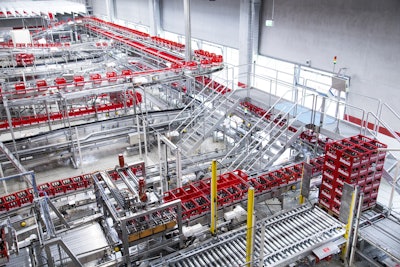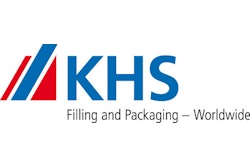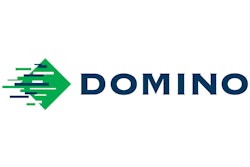Rothaus Brewery, a famous traditional brewer located high in Germany’s Black Forest, recently invested in two major projects: a new refillable glass bottle sortation system and a new glass bottle filling line.
Gebo Cermex was largely responsible for the bottle sortation system, while KHS provided the 132-nozzle filler that anchors the new filling line. On both projects, maximum uptime and increased reliability were made possible thanks to the line engineering and conveying expertise of Gebo Cermex. Working closely with Rothaus engineers, Gebo Cermex was responsible for integrating 30 different machines from more than a dozen different suppliers. Gebo Cermex also installed stainless-steel-belt bottle conveyors and stainless-steel-belt crate conveyors that are essential to all of the depalletizing, un-crating, combining, accumulating, laning, sorting, re-crating, and re-palletizing that goes on.
A little background on the German beer market helps make clear how important the new sortation technology was. Returnable glass bottles are still by far the dominant package format for beer in Germany. Once upon a time, brewers relied on a small number of standardized bottle styles, which simplified the process of sortation when the bottles arrived at the brewery for cleaning and reuse. The 0.33- and 0.5-L brown bottles used by Rothaus are referred to as Tannenzapfle. Meaning “little fir cone,” it’s an allusion to the shape of the bottle and also references the location of the brewery in the Black Forest.
What’s changed in recent years is that marketing departments in the brewing industry, in their effort to differentiate their brands, have brought to the marketplace more bottle varieties. Bottles are now differentiated by color, by embossed logos, or by size, for example. Consequently, where once only 5% of the bottles arriving in returnable crates at the Rothaus facility had to be identified and eliminated, now that number might be as high as 80% at peak times. Faced with this new reality, the brewery had little choice but to invest in new sortation technology. According to Rothaus Technical Manager Ralf Krieger, the investment has proven to be a sound one. “Efficiency in our sortation process has gone from somewhere in the range of 60% to 92%,” he notes.
The sortation system, which occupies a new purpose-built addition to the Rothaus facility, works like this. When crates of bottles arrive at the Rothaus plant, the first step is to de-crate them. This is done by an automated system from BMS. Empty crates are conveyed by a complex system of overhead conveyors to four different BMS crate-filling machines, where they will be refilled with bottles after bottle sortation has taken place.
Before addressing bottle sortation, it’s important to point out that the vast majority of bottles arriving at the plant are one of four types. Thanks to vast stretches of conveyor connections and video camera inspection technology from Krones, the bottles eventually get sorted into four separate streams where each bottle is the same type. Each stream leads to one of the four crate-filling systems mentioned above. The few bottles that are not one of the four main types are dealt with in an off-line, semi-automated operation.
Re-crated bottles that Rothaus does not want are sent to other breweries. The “little fir cone” bottles also get re-crated, but only after they pass through a piece of equipment that removes the gold foil that decorates the top of each bottle. Once crated, the “little fir cone” bottles are palletized (see bottom right corner of lead photo, which shows the discharge section of the vast sortation system) and taken out of the sortation room and into the part of the plant occupied by the filling lines. Here the bottles are de-crated. The crates then proceed through a washing system while the bottles are single-filed into a Krones washing system that uses a caustic cleansing solution and temperatures to 80 degrees C. The capacity of the new bottle sortation system is an impressive 3,200 crates/hr. Remarkably, only three people are required to make it operate.
The sorting solution is able to deliver reliability and efficiency nearly regardless of the percentage of “wrong” bottles that arrive. This means that even if up to 80% of incoming bottles are incorrect, it’s not a problem. According to Louis Merienne, Sales Director Europe, Beverage Markets at Gebo Cermex, the success of the installation may have something to do with the fact that his firm and Rothaus have been partners since 1991.
“Our capabilities in line engineering,” Merienne continues, “have been especially appreciated due to the fact that as an engineering integrator, we are trusted as an independent partner. Thanks to our line engineering expertise, we were able to help Rothaus in setting up the business case and calculating their Return on Investment of sorting the goods themselves. Our patented sorting system solution is controlled at the line level. The central automation program regulates the speed of the machines, for continuous and seamless running of the whole line, leading to maximum uptime for the customer.”
Filling at 50,000 bph
The KHS Innofill Glass DRS filler and its 132 filling stations can produce up to 50,000 bottles/hr. Rothaus fills 0.5- and 0.33-L bottles on the line, so it’s important that the filler offers fast format part changeovers to ensure a high level of flexibility. Thanks to the hygienic QUICKLOCK fast-acting locking system, bottle guide parts can be exchanged with a few manual adjustments and remain securely in place. The conversion time is in the range of 15 to 20 minutes. “Simple lever knobs not only release and lock parts, they’re also robust and can withstand broken glass or chemicals,” says Ludwig Clusserath, Head of Filling Technology Development at KHS.
To prevent bottle breakage from the outset, the Innofill Glass DRS is also equipped with the SOFTSTOP system, which is registered as patent pending. This compact, hygienic bottle flow gate is activated at full power. Here, a light barrier measures the distances of the containers as they are fed into the filler. A brake wedge then gently decelerates the bottle flow so that the filling process and foaming take place at a consistently high output. This ensures stable filling quality. And the new braking ramp means that there is no additional scuffing of bottles. Plus, noise is kept to a minimum.
During filling, the unique DIAS diagnostic assistance system carefully logs the filling process. Pressure sensors in every filling valve monitor the pressure, time, and step sequences without interruption. In this way, any deviations from the target values are immediately recognized.Additionally, evacuation and CO2purging processes are monitored to ensure low oxygen pickup. Broken bottles are consistently detected across the entire processing angle and a bottle burst routine is triggered. The sensor data can be invoked as a pressure graph on the monitor.
“This gives operators the chance to detect any faults as quickly as possible,” says Clusserath. In practice this not only makes fast, targeted repairs possible and relieves operator workloads, but it also provides a basis for preventive maintenance. This data enables results to be statistically evaluated, with the help of which future sources of error can be eradicated in advance.
Controlling foam
KHS says that another significant feature on the filler is the camera-controlled OPTICAM foam-control system. The foam generated during filling displaces the residual oxygen from the bottle and is thus of great importance for the quality of the beer. As the foaming is dependent on various parameters in the filling process, however, with its new OPTICAM system KHS enables the head of foam to be constantly monitored and regulated regardless of the machine operator. This means that Rothaus can not only prevent undue beer loss due to excessive foaming but it can also detect and reject bottles with insufficient foaming. If the beer error rate becomes too high, production is stopped and the operators can read off the cause of the fault from a clear analysis report.
With the inclusion of the SOFTSTOP, DIAS, and OPTICAM options, the entire KHS system at Rothaus safeguards the quality of the beer throughout the entire filling process through advanced mechanical and digital system solutions.
Traditional steel crowns are fed into the KHS filler/crowner by a system provided by Gebo Cermex. As bottles exit the KHS system, they are conveyed into a Krones cold glue labeler that applies a paper label to the body of the bottle.A laser coding system from Domino (www.domino-printing.com) marks each label with an expiration date.
The labels of Rothaus beer bottles are famous for the friendly lookingfrauleinwhose name is Birgit Kraft. A blonde-haired country girl in the traditional garb of the Black Forest region, she holds two glasses of beer and is surrounded by fir cones. Her name is a play on words in the local dialect, as “Bier git Kraft” means “Beer gives strength.” Unsophisticated as this graphic treatment may appear to some, it hasn’t changed a bit since 1972 and is viewed by Rothaus marketers—who engage in absolutely no advertising—as a key to the brewery’s continued success.
Finished bottles are packed into returnable crates by yet another automated system from BMS. Then the filled crates are palletized by the final piece of BMS equipment in the line. A thermal-transfer print-and-apply labeler from Logopak puts shipping and logistics data on the side of the pallet and then it’s off to the warehouse.
“It took considerable planning up front, and then we spent half of 2018 installing the new sortation system and the second half installing the new bottling line,” says Krieger. “But from an efficiency standpoint, it puts us in a good position going forward.”
Seen in the photos
Lead photo: Seen in the upper left of this birds-eye view of the brewery’s purpose-built sortation system are empty crates that have had mixed returnable glass bottles removed from them and are now being conveyed to packing machines that will re-crate the bottles after they’ve been sorted by type. In the bottom center is a sweeping mechanism that takes crates of freshly sorted empty bottles coming in from the right and forms layers of crates two across and four deep. These layers are then conveyed forward to a palletizer not visible in the photo, though the finished pallet is in view (bottom right corner). These pallets are taken out of the sortation room and to an adjacent area in which washing and filling lines are located.
Second photo: Using vast stretches of conveyor and video camera inspection technology, the new sortation system sorts out Rothaus bottles from all the other bottle types that arrive each day. Evidence of the system’s effectiveness is seen in the conveyor section that’s dead center in the photo. Unlike the chaotic variety seen on all the other conveyor sections, there’s only one kind of bottle on this entire stretch: “little fir cone” bottles whose decorative gold foil has been removed and whose green and white glue-applied paper labels are still in place. These freshly sorted bottles are on their way to being re-crated, palletized, and conveyed out of the sortation area toward the section of the facility where de-palletizing, de-crating, washing, and filling take place. Removal of the paper labels prominently visible on each bottle takes place during the bottle washing process.
































